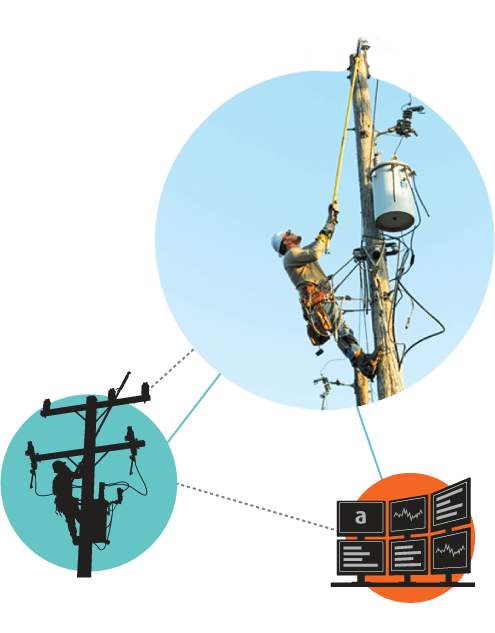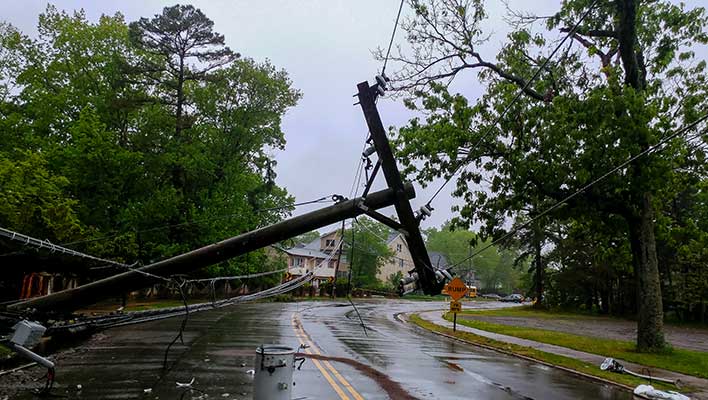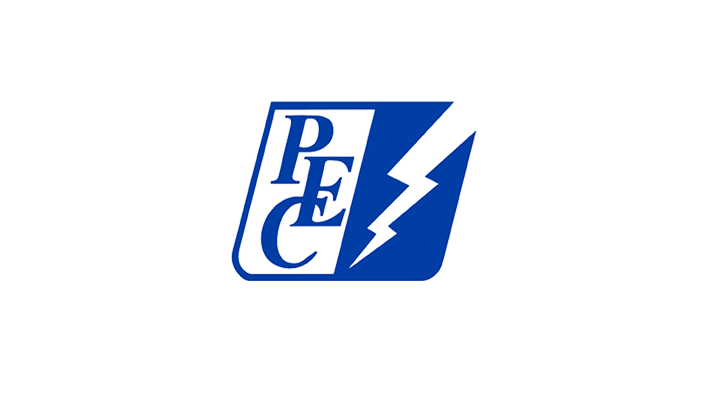Southern Maryland Electric Cooperative

Cooperative Streamlines Crew Management
ARCOS callouts use algorithms to call crews in the order our business processes dictate. With ARCOS, we’ve assembled 14-person crews in 24 minutes. Before that we made callouts by hand, one call at a time - it could take an hour to build a crew.
Inspiration for Change
SMECO’s distribution system operators can track linemen’s skill sets and available equipment in software paired with an OMS. To respond rapidly to an outage situation, utility distribution system operators (DSOs) must call on linemen to get the job done. By investing in new crew management technology, Southern Maryland Electric Cooperative (SMECO) has improved restoration time.
Historically, SMECO employed a call rotation and called out two-person service crews. If the serviceman or helper couldn’t accept a callout, the time-strapped DSO would scan a roster and set of roles to find the person entitled to get the next call.
At SMECO, a Hughesville, Maryland-based company, supervisors were spending a lot of time researching complaints about bad callouts, which had become a weekly occurrence. Fifteen years ago, the company automated its callout process with the ARCOS Callout and Scheduling Suite, which uses a set of algorithms to call crews in the order that SMECO’s work agreements dictate. Automated callouts now mirror SMECO’s work agreements.
Before ARCOS, SMECO’s callout records show that a manual callout of seven people could take more than an hour to fill. Since ARCOS, there have been numerous call-outs of this size, and these callouts take only a matter of minutes. Fast-forward to today, and the company is using the ARCOS Crew Manager software, which has evolved from the use of the automated callout system.
“ARCOS callouts use algorithms to call crews in the order our business processes dictate,” Wise said. “With ARCOS, we’ve assembled 14-person crews in 24 minutes. Before that we made callouts by hand, one call at a time – it could take an hour to build a crew.”
Solutions
SMECO implemented Crew Manager, which largely accrues to DSOs, supervisors and management. Crew Manager provides organization-wide visibility for all stakeholders into the status of field resources, crew makeup and crews’ assigned equipment and vehicles. Whether a utility uses the data to ascertain how many hours before a crew “times out” during lengthy storm restoration, or gauging whether a crew has the correct staffing levels and vehicles to complete an assigned job, Crew Manager provides accurate information in an instant for decision-making that maximizes efficiency and safety.
Benefits Realized
Now, SMECO’s DSO’s can use Crew Manager, along with the work and outage management system, to track crews’ field work during normal business hours. For example, when operation supervisors begin their shift, they can enter the status of their crew members into the software. Then on a dashboard accessible to the DSOs, Crew Manager monitors and computes the hours worked, breaks and availability of workers in the field.
Crew Manager enables SMECO’s managers to forecast crew and equipment needs hours (or even days) in advance. The system also allows managers to record and play back scenarios after the restoration event.
Crew Manager, however, increases the accuracy of response and gives the utility more lead time in identifying which resources it might need. It can visualize any number of restoration scenarios on Crew Manager’s virtual planning board in seconds, ahead of the storm. The software tracks crews continuously and computes their hours worked, breaks, and current and future availability, so SMECO can see immediately if it needs to call in additional crews from contractors or neighboring utilities.
SMECO’s managers can organize resources for a forecasted storm through the Crew Manager software. They can view a visual display of the status, skill sets and location of crews and equipment in Crew Manager and drag and drop color-coded icons across the utility’s territory to create different restoration scenarios.
That playback is akin to a sports team watching film from its last game to analyze how well it did. With a paper-based system, preparing for a forecasted storm would likely leave time for laying out only one scenario that’s largely based on past experience.”
Enhancing Productivity
Along with helping crews to work safely, it also streamlines productivity for the DSOs. For example, if a crew member is ill and cannot work, a DSO could simply click on a name in Crew Manager and drag them off the rotation, which updates the schedule and crew make-up. DSOs and/or supervisors no longer manually strike someone from a paper roster and send emails to alert crew leaders and crews.
SMECO uses Crew Manager to automate the planning and tracking work DSOs previously did by hand, so the DSOs can spend more time on high-value work like expediting outage response, ensuring crews have what they need in terms of equipment for customer appointments and anticipating when a gap in work might occur due to, say, the crew requiring rest. In that last scenario, a DSO would get an alert about a crew approach-ing its rest period and know that to keep the job going, the DSO would have to find another crew.
To provide safe and reliable electricity, utilities must coordinate multiple departments including field engineers, con-tractors, system control operators, customer/member service representatives, and executives, along with their high-tech skill sets. Documenting the real-time status of the field and disseminating this information to different groups can be time consuming, but critical. Crew Manager, however, can adapt to a utility’s way of working.
Company Background
Southern Maryland Electric Cooperative (SMECO) was incorporated in 1937 and is one of the 15 largest electric cooperatives in the United States with more than 175,000 member accounts in Charles County, St. Mary’s County, southern Prince George’s County, and most of Calvert County.

Related Success Stories
- Case Study
One of the Nation’s Most Efficient Electric Utilities Restores Service Faster
- Case Study
Electric Utilities Restore Quickly and Safely After Devastating Hurricane
- Case Study
Electric Distribution Coop Drives Clear Operational Awareness



